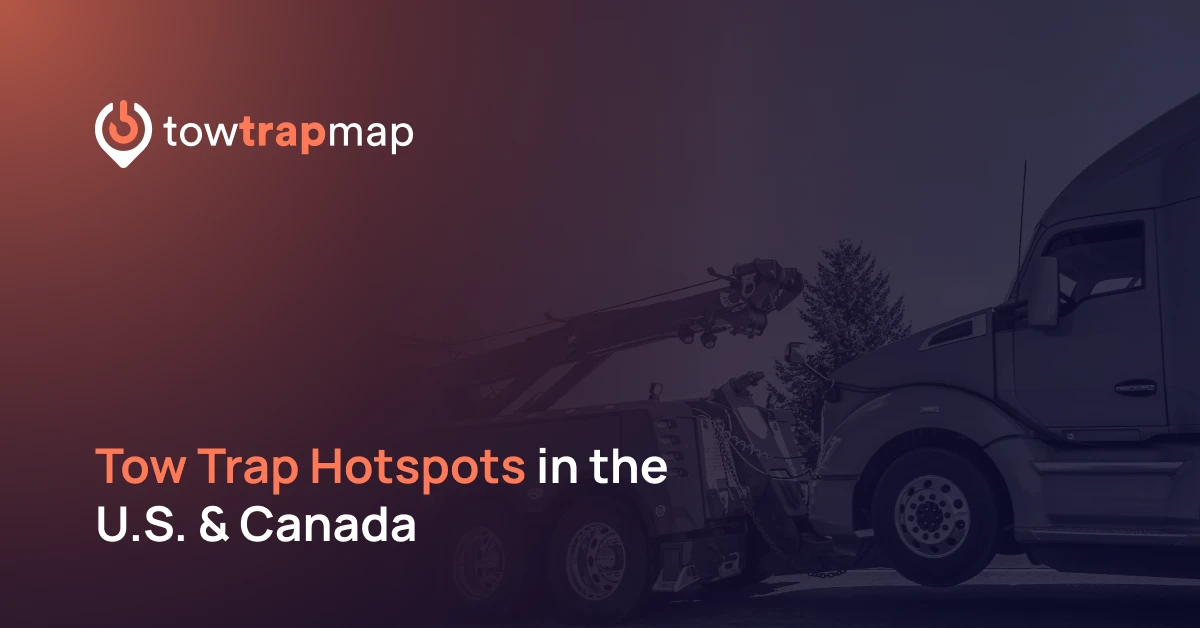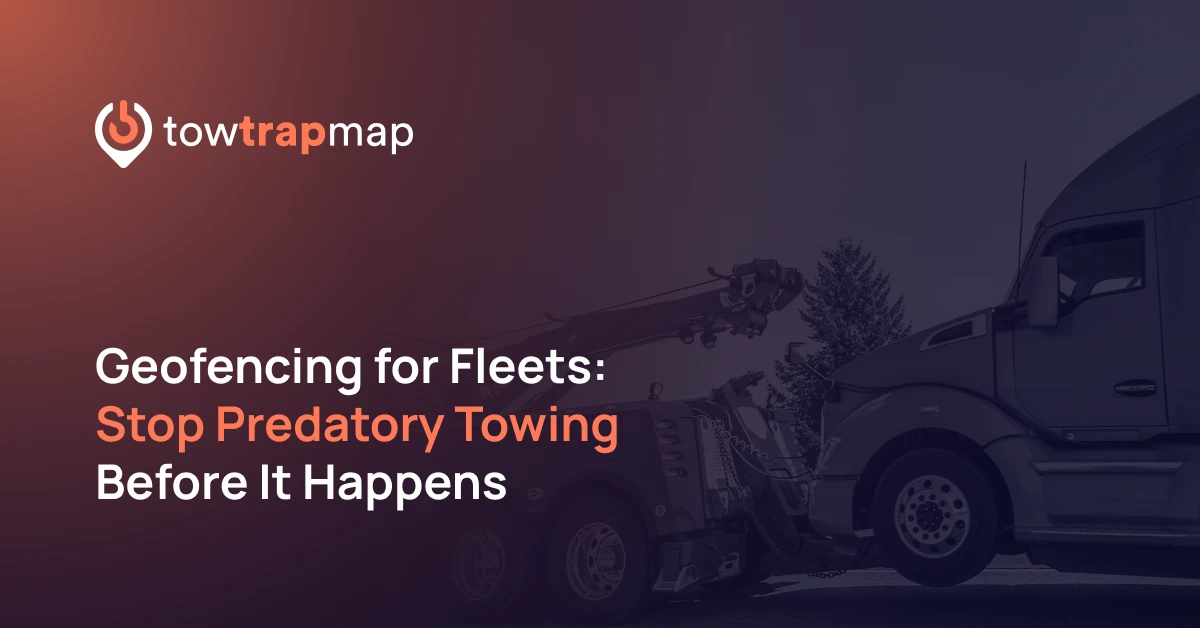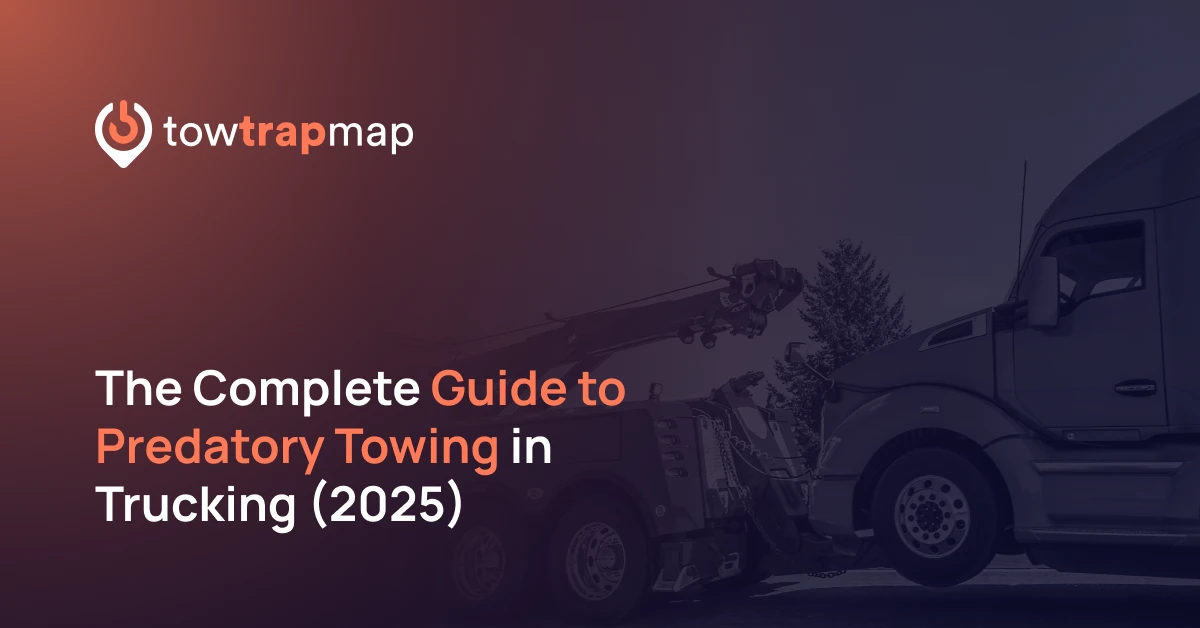Predatory towing doesn’t happen everywhere with the same intensity. Some cities and regions have developed a reputation as tow trap hotspots — places where drivers are disproportionately at risk of unfair, overpriced, or outright illegal towing practices.
By looking at public complaints, news reports, lawsuits, and driver stories, we can begin to see where the worst tow traps are concentrated in the U.S. and Canada.
And while this list is far from complete, it’s the starting point for a bigger mission: building a crowdsourced map of risky towing zones through TowTrapMap.
Why Certain Areas Become Hotspots
Some regions create the perfect environment for predatory towing:
High truck traffic: Urban corridors, ports, and warehouse districts attract heavy volumes of trucks. More targets = more tows.
Scarce safe parking: With limited legal truck parking, drivers are forced to gamble on unfamiliar lots.
Aggressive private contracts: Some cities outsource enforcement to private towing companies with little oversight.
Weak regulation: Where laws are vague or unenforced, predatory operators thrive.
Understanding the “why” helps us see why certain cities keep showing up in driver complaints.
U.S. Tow Trap Hotspots
Chicago, Illinois
Chicago has long been considered a towing capital. In 2020, investigations revealed private companies aggressively patrolling lots near industrial corridors, towing trucks for minor or unclear violations.
Fleets report bills ranging from $2,000–$5,000+ per incident, with daily storage fees stacking fast. Some carriers have reported multiple tows in a single month, creating thousands in unexpected costs.
Houston, Texas
As one of the busiest freight hubs in the country, Houston has seen repeated driver complaints about hidden signage around warehouses and industrial lots.
Even though Texas has passed stricter towing regulations, drivers still share stories of being towed within minutes of stopping, often while trying to rest. Bills frequently include inflated mileage charges and high administrative fees.
Los Angeles, California
Parking is notoriously scarce in Los Angeles, especially for heavy trucks near ports and distribution centers. This forces drivers into risky spots where predatory towers wait.
High-profile lawsuits in California have uncovered towing companies charging excessive rates — sometimes more than $7,000 for a single tow. Drivers also report aggressive “spotters” who patrol lots, calling tow trucks the moment a semi pulls in.
New York City, New York
In New York, truckers report tow-away zones with unclear or hidden signage, especially in boroughs with dense industrial traffic. Tow companies frequently add storage, “release,” and “administrative” fees that send bills over $5,000 per tow.
The combination of tight parking, constant enforcement, and lack of safe truck stops makes NYC a persistent hotspot.
Canadian Tow Trap Hotspots
Toronto, Ontario
Toronto has been a flashpoint for towing scandals. In 2021, the Ontario government passed new towing regulations after years of complaints about inflated bills, kickbacks, and intimidation.
Even with reforms, drivers still report being charged thousands for basic tows — a sign that predatory practices are hard to stamp out completely.
Vancouver, British Columbia
With its port and dense warehouse districts, Vancouver has become a hotspot for towing disputes. Complaints center on private lots near freight corridors, where trucks are towed almost immediately after parking.
Bills often exceed $3,000–$5,000, with storage charges adding hundreds more per day.
Calgary & Edmonton, Alberta
Alberta drivers have reported repeated instances of $5,000+ towing charges. In one case, a carrier was forced to pay thousands in release fees after a semi was towed from a private lot with unclear signage.
Industrial parks and warehouse corridors appear to be the most dangerous areas, with fleets reporting multiple incidents in short timeframes.
The Ripple Effect for Fleets
Predatory towing is not just a one-time inconvenience — it creates long-term financial and operational risks:
Unplanned costs: A $6,000–$9,000 invoice can wipe out a truck’s monthly operating margin.
Missed loads: Delays cascade through supply chains, leading to penalties and angry customers.
Driver turnover: Frustrated drivers may leave fleets, adding replacement costs.
Admin drain: Dispatchers lose hours negotiating with tow yards, covering loads, and filing complaints.
When these hotspots are part of a fleet’s regular routes, losses can snowball into six figures annually.
How the Community Can Help Map Tow Traps
TowTrapMap was created to turn individual stories into shared protection.
Here’s how it works:
Drivers or fleets submit tow trap reports at TowTrapMap.com/report.
Reports are moderated and verified.
Each new report becomes a pin and geofence on the map.
Fleets will soon be able to export these zones into Samsara, Geotab, and Motive to set real-time alerts.
Every new report makes the map more powerful — and makes hotspots easier to identify and avoid.
Why do these hotspots exist? Read our complete guide.
Call to Action
Predatory towing thrives in the shadows. The only way to fight it is through shared knowledge and transparency.
👉 Have you been towed unfairly? Submit your report today → TowTrapMap.com/report.
Every report protects the next driver. 🚛



